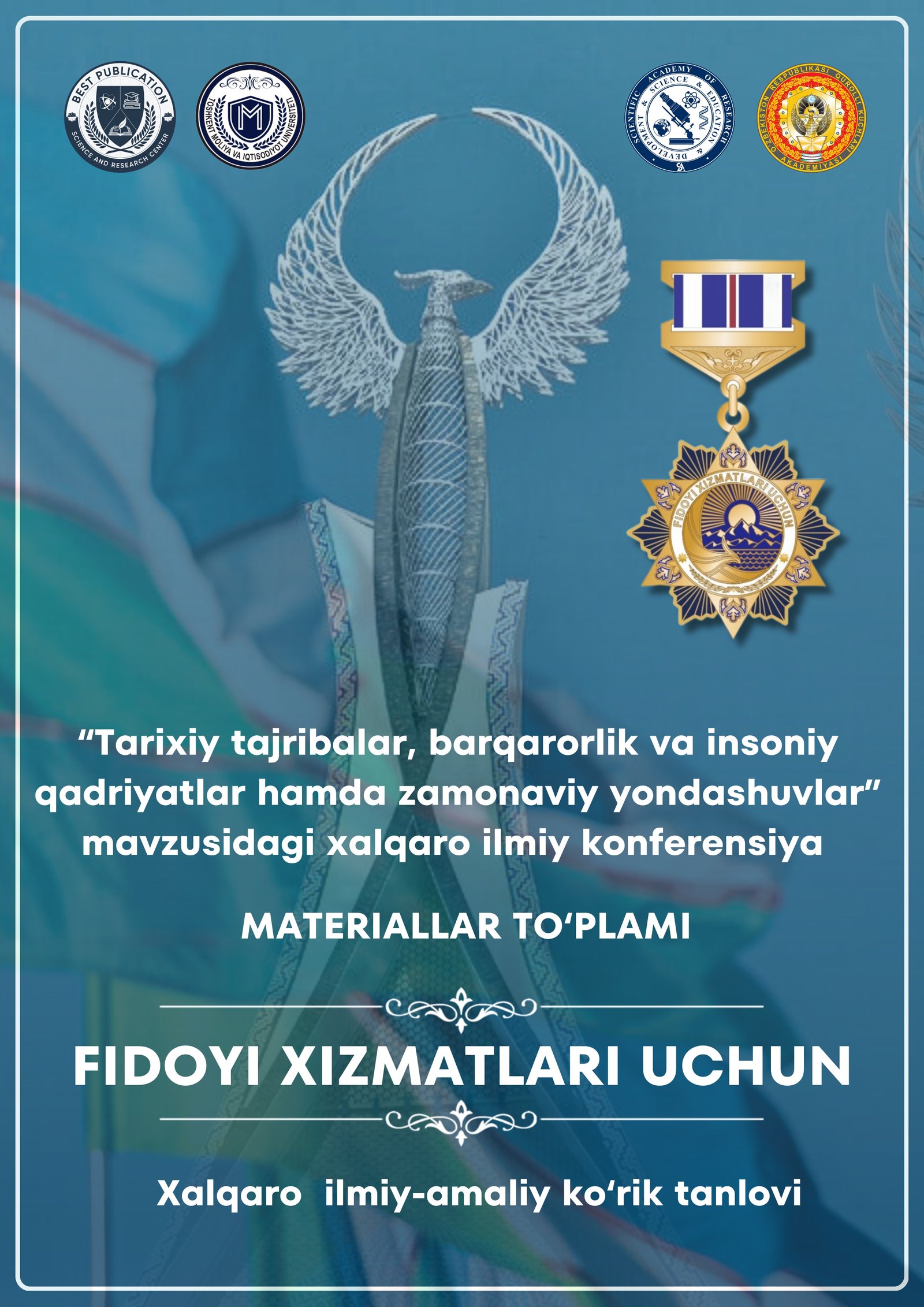NANOMATERIALS IN LIVESTOCK
Keywords:
nanoparticle, nanotechnology, Liquid vitamins, chip, nanozinc, physicochemical, nanomineralAbstract
The article presents an analysis of literature data on modern and current trends in the development of livestock farming and the use of nanotechnology methods in livestock farming. The application of nanotechnology in animal agriculture is improving the effectiveness of treatment of animal diseases in therapeutics, diagnostics, tissue engineering, vaccine production and other areas of animal production. The development of new types of nanominerals and nanoemulsion technology make it possible to produce high-calorie and effective immunomodulating feed for cattle and poultry at minimal cost. To solve reproductive problems in animal husbandry, new types of nanosensors with a nanosized and highly sensitive biomolecular probe have been developed to solve reproduction.
References
1. El-Sayed A., Kamel M. (2020). Advanced Applications of Nanotechnology in Veterinary Medicine. Environ. Sci. Pollut. Res. 27, 19073–19086. 10.1007/s11356-018-3913-y 10.1007/s11356-018-3913-y
2. Hassan A. A., Sayed El-Ahl R. M. H., Oraby N. H., El-Hamaky A. M. A., Mansour M. K. (2021). Zinc Nanomaterials: Toxicological Effects and Veterinary Applications. Zinc-Based Nanostructures Environ. Agric. Appl., 509–541. 10.1016/b978-0-12-822836-4.00019-7 10.1016/b978-0-12-822836-4.00019-7
3. Joanitti G., Silva L. (2014). The Emerging Potential of By-Products as Platforms for Drug Delivery Systems. Cdt 15, 478–485. 10.2174/13894501113149990171 10.2174/13894501113149990171
4. Laurent S., Forge D., Port M., Roch A., Robic C., Vander Elst L., et al. (2008). Magnetic Iron Oxide Nanoparticles: Synthesis, Stabilization, Vectorization, Physicochemical Characterizations, and Biological Applications. Chem. Rev. 108, 2064–2110. 10.1021/cr068445e PubMed Abstract | 10.1021/cr068445e
5. Reddy P. R. K., Yasaswini D., Reddy P. P. R., Zeineldin M., Adegbeye M. J., Hyder I. (2020). Applications, Challenges, and Strategies in the Use of Nanoparticles as Feed Additives in Equine Nutrition. Vet. World 13, 1685–1696. 10.14202/vetworld.2020.1685-1696 PubMed Abstract | 10.14202/vetworld.2020.1685-1696
6. Saragusty J., Arav A. (2011). Current Progress in Oocyte and Embryo Cryopreservation by Slow Freezing and Vitrification. Reproduction 141, 1–19. 10.1530/REP-10-0236 PubMed Abstract | 10.1530/REP-10-0236
7. Shabani R., Fakhraei J., Yarahmadi H. M., Seidavi A. (2019). Effect of Different Sources of Selenium on Performance and Characteristics of Immune System of Broiler Chickens. Rev. Bras. Zootecn 48, e20180256. 10.1590/rbz4820180256 10.1590/rbz4820180256 8. Soppimath K. S., Aminabhavi T. M., Dave A. M., Kumbar S. G., Rudzinski W. E. (2002). Stimulus-responsive "smart" Hydrogels as Novel Drug Delivery Systems. Drug Dev. Industrial Pharm. 28, 957–974. 10.1081/Ddc-120006428 PubMed Abstract | 10.1081/Ddc-120006428
9. Suzuki Y., Tanihara M., Nishimura Y., Suzuki K., Kakimaru Y., Shimizu Y. (1998). A New Drug Delivery System with Controlled Release of Antibiotic Only in the Presence of Infection. J. Biomed. Mat. Res. 42, 112–116. 10.1002/(sici)1097-4636(199810)42:1<112:aid-jbm14>3.0.co;2-n 10.1002/(sici)1097-4636(199810)42:1<112:aid-jbm14>3.0.co;2-n
10. Swain P. S., Rajendran D., Rao S. B. N., Dominic G. (2015). Preparation and Effects of Nano Mineral Particle Feeding in Livestock: A Review. Vet. World 8, 888–891. 10.14202/vetworld.2015.888-891 PubMed Abstract | 10.14202/vetworld.2015.888-891

